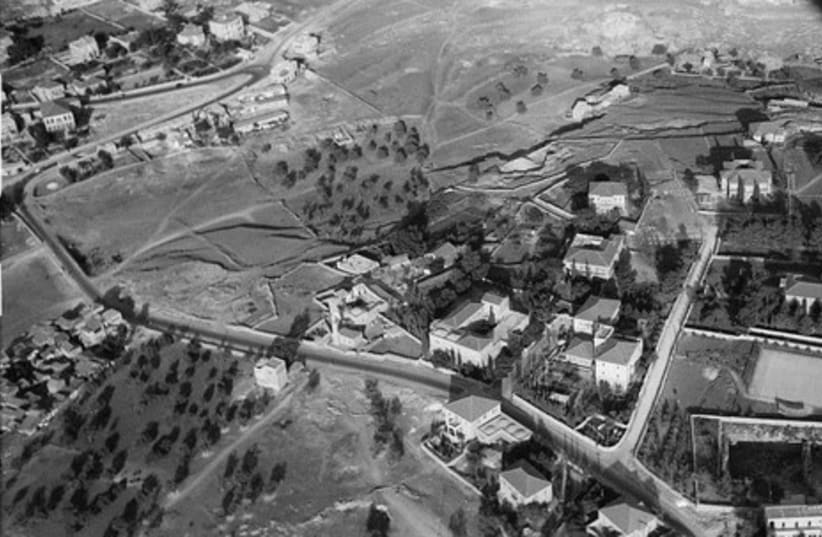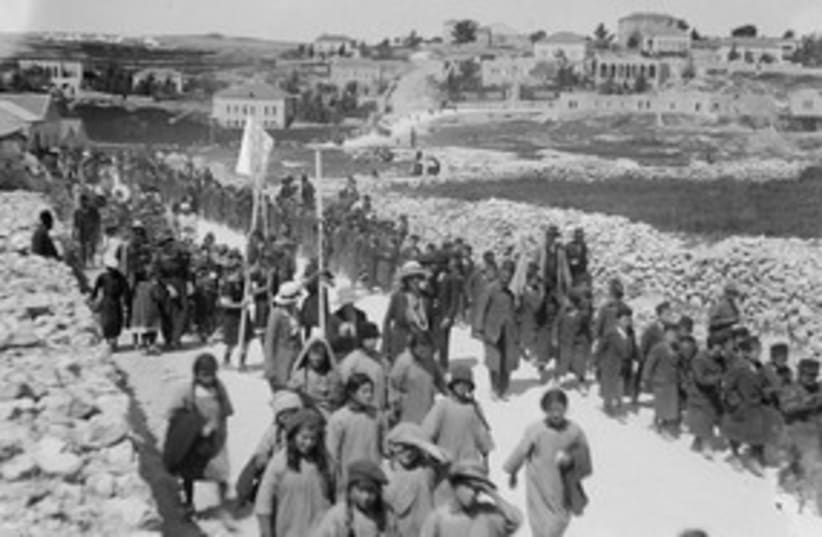



Who are the hundreds of children? Why are the boys and girls separated? Where are they marching to? Where is this picture taken? And why is there a tent compound on the left horizon?RELATED:Israel history photo of the week: Women farmers of IsraelIsraeli history photo of the week: King David lives onPhoto analysis and comparison to an aerial photograph from 1931 and contemporary pictures indicate that the children are walking south on the Nablus Road (Derech Shchem) in the direction of the Damascus Gate of the Old City of Jerusalem. Behind them is the road that veers to the right toward Mt. Scopus. The road leads to a neighborhood built around the grave of a High Priest named Shimon the Righteous (Hatzadik) who lived in the days of the Second Temple. The boys and girls come from ultra-Orthodox schools, evidenced by the boys’ hats and frocks. The girls are wearing ultra-Orthodox fashion: shapeless, modest smocks. But wait, the second batch of girls, those behind the Star of David banner (might they be from a “Zionist” school?) are wearing more stylish dresses and hats.
The tents belong to a British army camp after they defeated the Turks in 1917 and were deployed along the northern ridges stretching from Nebi Samuel to the Mount of Olives. The compound appears similar to other British army compounds in Library of Congress photographs. The day started off cool, and the girls have shed their sweaters. It’s a warm Spring day, and from the shadows it’s probably around 2 PM. In fact, the day was Tuesday, April 30, 1918. The procession is almost certainly an organized outing of several Jerusalem schools taking place on Lag Ba’Omer, four weeks after Passover. Traditionally, on Lag Ba’Omer Jews flock to the Galilee mountaintop of Meiron to the grave of Shimon Bar Yochai, one of the most famous scholars in the Talmud. But some 100 years ago, travel to Meiron would have taken days. Instead, the children took a hike to Shimon Hatzadik’s grave, a known custom 100 years ago in Jerusalem.Veteran Jerusalemite Shmulik Huminer wrote in his memoirs: “Anyone who could travel to Meiron on Lag Ba’Omer would go, and there take place miracles and wonders. But the residents of Jerusalem who couldn’t afford to travel to Meiron have as compensation the cave of Shimon Hatzadik located at the edge of the Sheikh Jarrah neighborhood north of the Old City.”Today, Lag Ba’Omer is a day when Jewish children still go out to parks and forests to celebrate. In Jerusalem, many traditional Jews still visit Shimon’s grave. The houses around the grave where Jews lived 100 years ago were abandoned under threat of Arab pogroms in the 1920s and 1930s. The Hadassah convoy massacre in 1948, in which almost 80 Jews were killed, took place on the road beneath the building with the very prominent arches.In recent years, however, Jewish families have returned to the Shimon Hatzadik neighborhood.More photos can be viewed at http://www.israeldailypicture.com